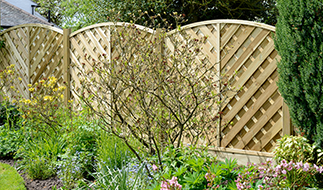How to Stabilise a Fence Post in the Ground
- Gates
- Railings
- Fencing
- Accessories
& Fitting- Sheds
& Storage- Garden Structures
- Design
& StyleMetal Gates & Railings- Info
& Help2025-02-18
Few tasks in life are as simple as digging a hole with expectations of post success. A fencing structure needs secure posts to maintain its stability because weak foundation points can collapse any arrangement. Fixing your posts must be done in an organised manner.
Getting Started
Starting with your fence installation requires appropriate tools. A post hole digger along with a spade serves with a spirit level while gravel provides drainage and postcrete or concrete mix and an appropriate measuring tape are needed for successful fence stabilisation. Buy good quality tools since they will simplify your work.
Digging Done Right
The accuracy of your hole excavation requires your highest attention. When installing a 6ft fence one should make the hole reach at least 2ft deep. The hole depth should measure about 3ft when working in exposed areas along with soft ground conditions. Whenever digging post holes, the diameter should equal three times the post size. The additional time you put into this step will provide excellent results.
The hole shape matters too. Make the hole base section wider in comparison to its upper part. The hole should take a mushroom shape but upside down. The designed shape of the hole prevents shifting of posts caused by freezing-thawing cycles in the ground.
Drainage Basics
Failure to do this step now will result in later regret. Cover the bottom section of the hole with six inches of gravel. The post base remains dry by means of this prevention method. Exposure to water will cause both untreated and treated wood to degenerate into rot.
Setting Your Post
Most people make critical mistakes at this point. Start with post placement into the hole followed by dead level verification using a spirit level. Then brace it. Holding the post by hand during concrete pouring should be avoided due to potential safety risks.
Properly mix both postcrete and concrete before use. The outcome will be faulty when the mix contains too much water yet insufficient dryness. Gently add the concrete mixture until you verify post straightness. Construct a gentle slope starting from the area adjacent to the post as it will naturally drain water away.
Advanced Tips
Adding bitumen paint to your posts can substantially extend their lifespan. Apply bitumen coating to the underground segments of the posts. Bitumen implementation creates an additional moisture-resistant barrier to preserve the post structure. Older professionals add sharp sand to concrete mix because it strengthens the material and promotes drainage.
Clay soil requires installation of gravel barriers around the hole sides. Adding a drainage layer of clay enables the substance to soak up water similarly to a sponge thus extending the lifespan of your post by several years.
Waiting Game
Waiting for the mixture to rest for minimum 24 hours is essential before proceeding. The post should remain empty of any attachments before the mentioned period ends. The post requires a resting period of 48 hours when the weather remains both cold and damp. The hasty approach to this step can result in a crooked fence design.
Common Mistakes to Avoid
Many DIY fence project owners choose to work with quick-set concrete despite improper mixing methods. Don't. The short-term benefits of this method will not result in strong fence structures. Both shorter hole depths alongside holes that are too small for the project will produce weak results.
Using metal posts supports as a substitute for permanent construction is suitable only for post-repair situations or when building temporary fences. The permanent erection of fences requires concrete as one of your key materials.
The Long Game
A properly installed fence post will survive between 15 to 20 years and potentially longer. Examine wooden posts each year at their ground level area. The fence posts need a proper push to check for movement since any shifting indicates potential future concerns.
Post installation success happens through patient work. Any hasty fence construction might present acceptable results for a season yet harsh winter conditions will expose all your shortcuts.
The holes in the ground serve as essential supports for all your fence structures. When you do post installation properly the rest of your fence construction will reward you handsomely.
- Railings




